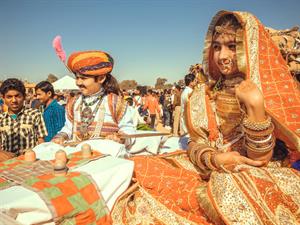PDF chapter test TRY NOW
The Social Evils:
Women in India were subjected to more social evils from the post-Vedic era, where they were treated inferior to men. The prevalence of social evil against women was higher.
Child Marriage, Sati, Female foeticide, Infanticide, were the common social evils present from the Post Vedic period to the \text{19th Century}.
Some of the Major stigmas on women were discussed below.
1. Female Foeticide
It is a heinous practise of sex-selective abortion or killing of a child if it’s a female. Preference for a male child and the Patriarchal mindset was the primary reason for this inhumane practice.
The Male dominant society firmly considered the female child as a “Liability” and the male child as an “Asset”. The tainted view of seeing a female child was also connected with another social evil, “The dowry System”.
Gender discrimination and immoral practice were severely prevalent among the women of rural areas of both North and South India.
The country in the second half of the \text{20th Century} enacted laws to protect the female foetus from getting killed. “The Medical Termination of Pregnancy Act – 1971” was the first law passed by India in this direction.
2. Female Infanticide
This barbarous practice of killing a girl child was highly seen in the areas of Northern plains and the areas dominated by the Rajputs. It’s also found in South India.
The stringent cultural norms laid by the Patriarchal society was the major practice by the ill-conceived practice.
The people of rural areas firmly believed that the money spent on a girl child would not do the family any good as they will be married to another family.

Female Infanticide
Dowry was another major cause of concern for the parents of the girl child, which also increased the cause of killing a female child.
The British East India Company took various steps and passed many legislations to curb the evil practice. Some of their legislation is given below.
- \text{Bengal Regulatory Act XXI – 1795}.
- \text{Regulating Act – 1802}.
- \text{Female Infanticide Act – 1870}.
3. Child Marriage:
Another disgracing practice that crippled the status of women was child marriage. This practice was even found in the Vedic Period.

Child Marriage
The practice of marrying a young girl to a Brahmana priest was the most common form of marriage during the Rig Vedic Period.
The rulers of the Delhi Sultanate used the practice to protect their women from rapes and abduction during the Invasion by other rulers.
Akbar: The Mughal king was the most broad-minded among the kings of the Mughal empire condemned the practice of child marriage during their rule and went on to issue a decree which set 16 years for age and 14 years for the girls as an age for marriage.
The minimum marriageable age was 10 years for girls in 1846, which was later changed by the Native Marriage act of 1872, where the ages of boys and girls were raised to 18 and 14 respectively.
Sarada Act: The act was passed in the year 1930, also known as the “Child Marriage Restraint Act”. It fixed the age of 14 and 18 for girls and boys. This act was named so due to its sponsor, “Haribilas Sarda”.
Later post the Independence in 1995, the marriage age for boys and girls were fixed at 21 and 18 according to the Hindu Marriage Act.
Reference:
Child Marriage - Radiokafka / Shutterstock
